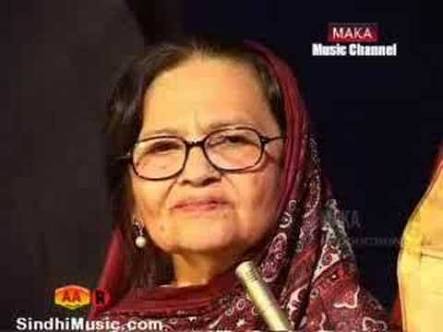Zarina Baloch was a teacher, Sindhi Sufi/revolutionary singer, poet, artist, feminist icon and a political worker grounded in the struggle of women and oppressed Sindhi and Baloch masses. She was one the leading founders of Sindhiani Tehreek, Women’s Action Forum and Sindhi Haree committee. She had been a lifelong political worker and her struggle against the ruling classes, feudals, martial laws in the country and her struggle against women’s oppression earned her the title of JiJi (mother) of Sindhi people.
She was born in a conservative Baloch family. Her mother died when Jiji Zarina was just 6 years old and her family arranged her marriage with her distant cousin at the age of 15 just. After the birth of her two children she developed differences with her husband who didn’t allow him to acquire further education and thus got separated from him.
She qualified her Final Exam in 1959 and joined Radio Hyderabad in 1960. She received her first Music Award in 1961. Her second marriage took place in Hyderabad on September 22, 1964 with leading Sindhi intellectual and writer Rasool Bux Palijo. She Joined School as a teacher in 1967 and taught thousands of students till her retirement from Model School Sindh University old Campus in 1996.
For over four decades JiJi Zarina remained a symbol of hope, revolution, struggle for emancipation of women and political rights of marginalized ethnicity Including Sindhi, Baloch and Siraikis. She was on the forefront of the anti one unit movement, anti Kalabagh Dam campaign and MRD movement for the restoration of democracy. It was her active role in such struggles that she was arrested and jailed in Sukkur and Hyderabad.
It is famous about Zareena Baloch that when she sang the entire Sindh danced with her music. Famous Sindhi poet Shaikh Ayaz wrote about her that “There is Ismat Chughtai in Hind, Zarina in Sindh”.
"Pere Pavandi Saan Chowandi saan by Zarina Baloch"
Awards : Pride Of Performance
Children: Ayaz Latif Palijo
